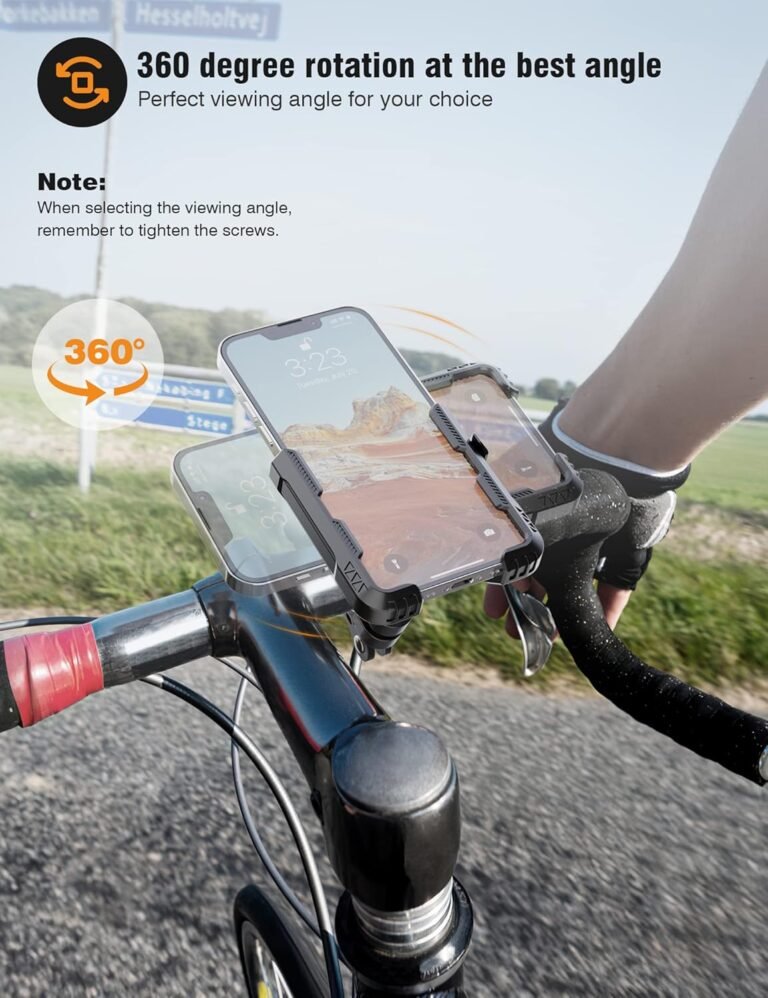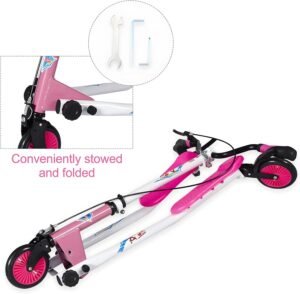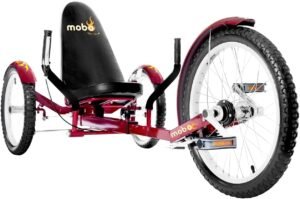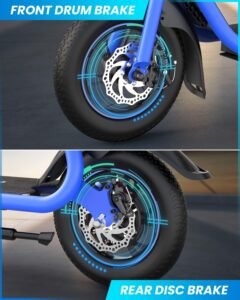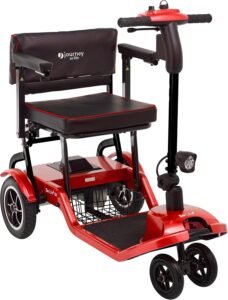
Taking care of your scooter’s tires is crucial for ensuring a smooth and safe ride. In this article, we will provide you with valuable tips on proper tire maintenance specifically tailored for scooters. From checking tire pressure to inspecting tread wear, these simple yet effective techniques will help prolong the life of your tires and enhance the overall performance of your scooter. So, let’s get started and make sure your scooter’s tires are in top-notch condition for your next adventure on the road.

This image is property of images.pexels.com.
Check out our product reviews!
Maintaining Proper Tire Pressure
One of the most important aspects of scooter tire maintenance is maintaining proper tire pressure. It not only ensures the longevity of your tires but also ensures a safe and comfortable ride. To maintain proper tire pressure, the following steps are crucial.
Check the manufacturer’s recommended tire pressure
Every scooter comes with a manufacturer’s recommendation for tire pressure, and it’s essential to follow these guidelines. This information can typically be found in the owner’s manual or on a sticker located on the scooter. The recommended tire pressure may vary depending on factors such as the scooter’s weight, tire size, and riding conditions.
Use a tire pressure gauge
To accurately measure your tire pressure, it’s important to invest in a tire pressure gauge. These gauges are inexpensive and can provide you with precise readings. Simply remove the valve cap, press the gauge onto the valve stem, and it will display the current tire pressure. If the pressure is lower than the recommended level, you will need to add air. If it is higher, you will need to release some air until it reaches the correct level.
Regularly check and adjust tire pressure
Tire pressure can fluctuate due to various factors such as temperature changes and normal air leakage. It is crucial to check your scooter’s tire pressure regularly, ideally once a month or before long rides. By doing so, you can ensure that your tires are always inflated to the proper level, reducing the risk of blowouts, premature wear, and compromised handling.
Avoid overinflating or underinflating the tires
Maintaining the recommended tire pressure is essential, but it’s equally important to avoid overinflating or underinflating the tires. Overinflated tires can lead to a harsh ride, reduced traction, and increased risk of damage from road hazards. On the other hand, underinflated tires can negatively affect handling, fuel efficiency, and tire lifespan. Therefore, it’s important to strike the right balance and maintain the manufacturer’s recommended tire pressure.
Inspecting Tread Wear
Regularly inspecting your scooter’s tire tread wear is vital for maintaining optimal performance and safety. Here are some important steps to follow when inspecting tread wear.
Perform regular visual checks
Visual inspection can reveal a lot about your tire’s condition. Look for any signs of uneven wear, such as one side wearing more than the other or the center of the tread being more worn out than the edges. Keep an eye out for any cuts, bulges, or foreign objects embedded in the tires. By checking your tires visually, you can catch potential issues early on and prevent further damage or accidents.
Use a tread depth gauge
To accurately measure the depth of your tire treads, a tread depth gauge is indispensable. It allows you to determine if your tires have reached the recommended tread depth or need replacement. Place the gauge in one of the main grooves of the tire and read the measurement. If the tread depth falls below the recommended level, it’s a clear indication that it’s time to replace your tires.
Replace tires when tread depth is below recommended levels
Tire tread depth is crucial for maintaining traction and stability on the road, especially in wet or slippery conditions. As a general rule of thumb, if the tread depth is less than 1/16th of an inch (1.6mm), it’s time to replace the tires. Riding with bald or worn-out tires significantly increases the risk of accidents, as they cannot properly grip the road surface.
Check for uneven wear patterns
Uneven wear patterns on your scooter’s tires can indicate an alignment issue or other mechanical problems. It’s essential to identify and address the underlying cause to prevent further damage and ensure your scooter’s performance. If you notice any irregular wear patterns, such as cupping or feathering, it’s recommended to have a professional examine your tires and scooter to determine the root cause.

This image is property of images.pexels.com.
Check out our product reviews!
Balancing Scooter Tires
Properly balanced tires are essential for a smooth and safe ride. Imbalanced tires can lead to vibration, uneven wear, and compromised handling. Here’s what you need to know about balancing your scooter tires.
Understand the importance of balancing
Balancing scooter tires involves evenly distributing the weight of the tire and wheel assembly. This process ensures that the mass is evenly distributed around the axle, minimizing vibrations and maximizing tire longevity. Balanced tires contribute to a comfortable ride and prevent premature wear on suspension components.
Use a dynamic balancing machine
To achieve proper tire balance, it’s recommended to use a dynamic balancing machine. This machine measures any weight imbalances in the tire and wheel assembly. It then determines the precise amount and location of wheel weights needed to achieve balance. The process involves attaching wheel weights to the wheel rim at specified positions. While it’s possible to balance tires manually, a dynamic balancing machine provides accurate and consistent results.
Seek professional help if necessary
While balancing scooter tires can be done at home with the right equipment, it’s often best to seek professional help. Tire balancing requires specialized tools and expertise, especially for more complex balancing issues. Professional technicians at scooter repair shops have the necessary equipment and knowledge to balance tires effectively, ensuring optimal performance and safety.
Rotating Tires
Rotating your scooter’s tires at recommended intervals is an important maintenance practice that can extend tire life, promote even wear, and enhance overall performance. Here’s what you need to know about tire rotation.
Determine the rotation pattern
Different tire configurations and scooter designs may require specific rotation patterns. It’s important to consult your owner’s manual or seek guidance from a professional technician to determine the appropriate rotation pattern for your scooter. Common rotation patterns include front-to-rear and crisscross patterns.
Follow the recommended mileage interval
Tire manufacturers often recommend specific mileage intervals for tire rotation. This interval is typically between 5,000 to 8,000 miles (8,000 to 12,000 kilometers), but it’s best to check your owner’s manual or consult a professional for the exact mileage. Regularly rotating your tires at the recommended mileage interval can help ensure even wear and prolong the lifespan of your tires.
Consider swapping front and rear tires
Swapping the front and rear tires during rotation can help distribute the wear more evenly. Front tires tend to wear faster than rear tires due to the weight distribution of the scooter and the additional stress caused by braking. By swapping the front and rear tires, you can help balance out the wear and maximize the tire’s lifespan.
Inspect for any damage during rotation
While rotating your tires, take the opportunity to inspect them for any signs of damage, such as cuts, punctures, or bulges. Identifying these issues early on can prevent potential tire failure and ensure your safety on the road. If you notice any damage, it’s essential to address it promptly by either repairing or replacing the tire.

This image is property of images.pexels.com.
Avoiding Tire Damage
Preventing tire damage is crucial for ensuring your safety and extending the lifespan of your scooter’s tires. Here are some essential tips to help you avoid common causes of tire damage.
Avoid riding over sharp objects
Sharp objects such as nails, glass, or debris can puncture or cut your scooter’s tires, leading to sudden blowouts or slow leaks. Be cautious of your surroundings while riding and try to steer clear of areas with visible sharp objects. If you cannot avoid them, slow down and maneuver carefully to minimize the risk of tire damage.
Watch out for potholes and road hazards
Potholes, speed bumps, and other road hazards can take a toll on your scooter’s tires. Be vigilant while riding and try to avoid rough patches or obstacles on the road. If you cannot avoid them, reduce your speed and navigate through them cautiously. Hitting potholes or road hazards at high speeds can cause tire damage or even result in a loss of control.
Keep tires away from oil and chemicals
Exposure to oil, gasoline, cleaning solvents, or other chemicals can degrade the rubber compounds in your tires, leading to premature wear and potential failure. When performing maintenance or cleaning tasks, be cautious not to allow any chemicals to come into contact with your scooter’s tires. If you accidentally spill any liquids on the tires, clean them off promptly with mild soap and water.
Properly park your scooter to avoid tire damage
Improper parking can lead to unnecessary tire damage. Avoid parking your scooter on rough or uneven surfaces, as they can cause the tires to develop flat spots or uneven wear. If possible, park your scooter in a garage or a designated parking area to protect it from extreme weather conditions and the risk of vandalism.
Cleaning and Protecting the Tires
Proper tire cleaning and maintenance not only keep your scooter looking great but also help prolong the lifespan of your tires. Here are some tips for cleaning and protecting your scooter’s tires.
Clean tires regularly
Regular cleaning of your scooter’s tires removes dirt, debris, and road grime, preventing them from accumulating and causing damage over time. Aim to clean your tires at least once a month or more frequently if you ride in dusty or muddy conditions.
Use mild soap and water
When cleaning your scooter’s tires, use a mixture of mild soap and water. Avoid using harsh chemicals or abrasive cleaners, as they can damage the rubber and degrade the tire’s performance. Gently scrub the tires with a soft brush or sponge, paying attention to the sidewalls and the tire grooves. Rinse thoroughly with clean water to remove any soap residue.
Apply tire protectant to prevent cracking
After cleaning, consider applying a tire protectant or tire dressing. These products help nourish the rubber and protect it from harmful ultraviolet (UV) rays that can cause cracking and fading. Choose a tire protectant specifically designed for scooter tires and follow the manufacturer’s instructions for application.
Avoid using harsh chemicals or abrasive cleaners
It cannot be stressed enough that using harsh chemicals or abrasive cleaners on your scooter’s tires can cause irreversible damage. Avoid using products such as bleach, solvents, or petroleum-based cleaners, as they can degrade the rubber and compromise tire performance. Stick to gentle and tire-specific cleaning products to maintain the longevity and appearance of your tires.
Replacing Worn-out Tires
Regardless of how well you maintain your scooter’s tires, there will come a time when they need to be replaced. Here’s what you need to consider when the time comes to replace worn-out tires.
Know when it’s time to replace the tires
Regularly inspecting your tires for wear and damage can help you determine when it’s time for replacement. As mentioned earlier, if the tread depth falls below 1/16th of an inch (1.6mm) or if you notice any significant damage such as cuts, bulges, or sidewall cracking, it’s a clear indication that you should replace the tires. Additionally, if your tires are several years old, it may be time for a fresh set, as rubber compounds can deteriorate over time.
Choose the right type and size of tires
When replacing your scooter’s tires, it’s crucial to select the correct type and size. Consult your owner’s manual or seek guidance from a professional if you’re unsure. The type of tire you choose depends on factors such as your riding style, terrain, and weather conditions. It’s also essential to ensure that the new tires match the recommended size and load capacity specified by the manufacturer.
Consider professional installation
Proper tire installation requires specialized knowledge and equipment. While it’s possible to install tires yourself, seeking professional installation ensures that the tires are mounted correctly and balanced for optimal performance. Professional technicians have the expertise to handle the installation process safely and efficiently, saving you time and potential headaches.
Dispose of old tires properly
When replacing your scooter’s tires, it’s important to dispose of the old ones responsibly. Tires are not suitable for regular trash or recycling bins, as they can be harmful to the environment. Contact your local waste management facility or tire dealerships to inquire about tire recycling programs in your area. Recycling old tires reduces environmental impact and ensures they are properly processed for reuse.
Storing Tires Properly
Properly storing your scooter tires when not in use can help maintain their condition and prolong their lifespan. Here are some key points to keep in mind when storing your tires.
Clean and dry the tires before storage
Before storing your scooter’s tires, make sure they are clean and dry. Remove any dirt, debris, or contaminants, as they can deteriorate the rubber over time. Use mild soap and water to clean the tires, gently scrubbing them with a soft brush or sponge. Once cleaned, thoroughly dry the tires to prevent moisture buildup, as excess moisture can cause mold or mildew growth.
Store in a cool and dry place
It’s essential to store your scooter tires in a cool and dry environment. Exposure to high temperatures or humidity can degrade the rubber and compromise tire performance. If possible, store the tires indoors, away from direct sunlight and extreme temperature fluctuations. If outdoor storage is the only option, consider covering the tires with a protective tarp to shield them from the elements.
Avoid placing heavy objects on top of the tires
When storing your scooter tires, avoid placing heavy objects on top of them. The weight can cause the tires to deform or develop flat spots over an extended period. If you must stack the tires, ensure that the heaviest tire is at the bottom and distribute the weight evenly. Alternatively, use a designated tire rack or hang them on a wall-mounted tire rack to keep them off the ground and avoid unnecessary pressure.
Prevent exposure to sunlight and extreme temperatures
Sunlight and extreme temperatures can have detrimental effects on your scooter’s tires, even during storage. Prolonged exposure to UV rays can cause the rubber to age prematurely and become brittle, while extreme heat or cold can lead to cracking or rubber degradation. Whenever possible, store your tires away from direct sunlight and in an area where temperatures remain stable.
Using Tire Sealants
Tire sealants can provide a temporary fix for small punctures or slow leaks and help you get safely to a repair facility. Here’s what you need to know about using tire sealants on your scooter’s tires.
Understand the benefits and limitations of tire sealants
Tire sealants are designed to quickly seal punctures caused by small nails, screws, or other debris. They work by coating the inside of the tire and generating a temporary seal upon contact with air, preventing air loss. However, it’s important to note that tire sealants are not a permanent solution and should not be considered as a substitute for proper tire maintenance or repairs.
Follow the manufacturer’s instructions
When using tire sealants, it’s crucial to carefully read and follow the manufacturer’s instructions. Each product may have specific guidelines regarding application, quantity, and duration of effectiveness. Improper use can lead to ineffective sealing or cause damage to both the tire and the wheel.
Use sealants as a temporary solution
Tire sealants should be used as a temporary solution until you can reach a service facility for proper inspection and repair. They can help you get safely to a repair shop without compromising tire pressure and stability. Once your tire has been sealed with a tire sealant, it’s important to have the tire inspected by a professional, as the sealant may have masked underlying damage.
Consider professional tire repair if needed
While tire sealants can temporarily fix minor punctures, it’s crucial to have a professional handle more significant tire damage or persistent leaks. Proper tire repair involves removing the tire from the wheel, inspecting it thoroughly, and applying a permanent patch or plug from the inside. Seeking professional tire repair ensures a reliable and long-lasting solution, minimizing the risk of further damage or tire failure.
Seeking Professional Help
While some scooter tire maintenance tasks can be performed by the average rider, there are situations that may require the expertise of a professional. Here’s when it’s advisable to seek professional help for your scooter’s tire maintenance.
Consult an expert for tire maintenance
If you’re uncertain about any aspect of your scooter’s tire maintenance, it’s always a good idea to consult an expert. Professional technicians, tire dealerships, or scooter repair shops can provide valuable guidance and advice tailored to your specific scooter model and riding habits. They have the knowledge and experience to address any concerns or questions you may have and can help ensure that your scooter tires are in optimal condition.
Visit a scooter repair shop
Scooter repair shops specialize in maintaining and repairing scooters, including tire-related issues. If you’re experiencing handling problems, unusual vibrations, or any other tire-related concerns beyond your expertise, it’s recommended to visit a reputable scooter repair shop. They can diagnose and address the problem promptly, helping you ride safely and confidently.
Get professional tire services for complex issues
For complex tire issues or specialized services such as tire balancing or alignment, it’s best to rely on professionals. They have the necessary equipment and expertise to handle these tasks accurately and efficiently. Unresolved tire issues can affect your scooter’s overall performance and may even pose a safety risk. Investing in professional tire services ensures that your tires are in top condition and that you can enjoy a smooth and safe ride.
In conclusion, proper tire maintenance is essential for the longevity, safety, and optimal performance of your scooter’s tires. By following the recommended maintenance tasks, such as checking and adjusting tire pressure, inspecting tread wear, balancing tires, and regularly cleaning and protecting them, you can ensure that your scooter is equipped with tires that are in top condition. Remember to seek professional help when needed, and always prioritize safety when it comes to maintaining your scooter’s tires. With proper care, your scooter’s tires will provide you with a smooth and enjoyable ride for countless miles to come.






